We grew up in Iowa with maples, elms and oaks. Then we moved to New England and found nothing but pines on our one acre wooded lot. When we began to travel to the Desert Southwest, we knew that the vegetation would be much different and wondered how much we would miss the trees. I remember when we drove back to the Midwest from our first winter as snowbirds, looking for the forsythia and the lilac bushes which were just coming into bloom. But, slowly but surely as we spent more time in the Southwest, I missed the saguaros, those tall prickly things out on the desert.
Now, when we return to this area, I look for my first saguaro as we head south from Payson. There, look, up on the hillside. Ah, now we’re back.
Do I miss the trees? Well, actually not and, besides, we travel enough in the northern climates that we get lots of tree time.
The saguaro cactus (Carnegiea gigantea ) was named for philanthropist Andrew Carnegie.
The saguaro cactus can only be found in the Sonoran Desert and only below 4000’.They do not like snow, ice or anything like those. Hike in the Sonoran Desert and get above 4000’ and the saguaros disappear.
Saguaros grow very slowly. A young cactus may only grow 1 to 1.5 inches in its first eight years, while an adult saguaro can reach 60 feet in height. The amount of available water impacts their growth. the retain water in their pleats and use this up during dry seasons. You can tell by looking at them how much water they’ve got. This one is really healthy with lots of water stored up.
Saguaros get very heavy when they are fully hydrated.
The saguaro’s ability to store water is vital. Spongy tissue allows a fully-grown saguaro to take in up to 200 gallons during a heavy rain! I’ve heard of time-lapse videos that show a cactus visually expanded as it took in water. As an extra layer of protection, a wax coating on the outside prevents water loss.
A saguaro starts to flower around 35 years and produces its first arm around 50 years of age. At 125 years, a saguaro is generally considered an adult. The lifespan of the saguaro is 150 to 200 years.
Although rare, the cells of saguaro cacti will sometimes mutate to form fan-shaped crests in convoluted patterns. Crests are generally found at the top of the main stem.
Here’s one of my favorite crested saguaros, right on the University of Arizona campus here in Tucson. But, not only does this have a cool crest, it also has wavy spines all the way up.
When we were out at Saguaro NP, we asked about crested saguaros and they gave us a map showing where they were in the park. This one isn’t as elaborate as the one above, but, hey, it’s still growing.
This one has a different take on being crested.
I particularly like how Saguaros all look different. Yeah, they all are green, they all have spikes, they all have spines and woody stalks inside each spine. But they all grow different: different heights, different arms, different stances. Here’s one that is trying to look different. Doesn’t want to be one of the crowd.
Note the saguaro on the right - growing arms on its arms.
Sometimes we want directions and the saguaros will tell us which way to go. This one is telling us every which way but loose.
This one looks like it doesn’t have much time left but it’s still telling us to go ‘that a-way.’
Then there are the saguaros that really tell you where to go.
Here’s a saguaro with 51 arms. At least that’s what I read in our hiking book. This one is up near Phoenix in the Superstition Mts. We always like a goal when we hike and this became one of our goals. I looked at several hiking blogs and figured out where it must be. We hiked and hiked and kept looking to our left. Nope, nope. Then we rounded a cliff and - OMG - sure enough that’s it. And, it sure looks healthy.
And another view.
How much must this thing weigh? And, how old is it?
A saguaro often weighs less than an aspirin at age five and it may take about 10 years to get just an inch and a half tall, about the size of your thumb! Under these natural conditions it may take 20 years to attain 1’ in height, 30 years to reach 2’, by age 40 it may be up to 4’, by age 50 up to 7’, by 75 up to 16’, and by age 100 almost 25’. Throughout its range and depending upon soil and rainfall, it first blooms between 40 and 75 (average 55) years old, usually starts to grow arms when it is between 50 to 100 years of age (average 70), and it may live for perhaps 200 years or more (again, no one knows for sure).
The tallest saguaro ever measured was 78 feet tall.
Saguaros grow so slowly that they often start out under another bush or tree called a ‘nurse’ for protection.
But this one seems to have outgrown its nurse bush and might start depriving it of water and other nutrients.
The saguaro cactus is the water cooler of the Sonoran Desert, bringing all kinds of life forms together. When the cacti flower between April and June (which won’t happen until they’re about 70 years old), bats congregate to feed on the nectar, as do hummingbirds. As the flowers die and fruit appears, the bats are back for another feast. This process is so important to the saguaro’s continuing existence because its flowers lack the ability to self-pollinate.
This saguaro has lost all its waxy outside but the spines are still standing tall.
How old is this saguaro? As ‘young’ as the guy standing next to it.
Many become home for birds in the area. Gila woodpeckers and gilded flickers create holes initially. Then after they’ve moved on, owls, flycatchers and starlings adopt the abandoned houses.
Here’s a saguaro that has bit the dust and slowly turning into nutrients for the desert. The cycle of life continues.
Then we found this saguaro at one of the campgrounds we stayed in. Hmmm. Funny how they disguise antennas these days.
So, there you have it - all I know about the saguaro. Not much but enough to really appreciate them when we see them along the trails.


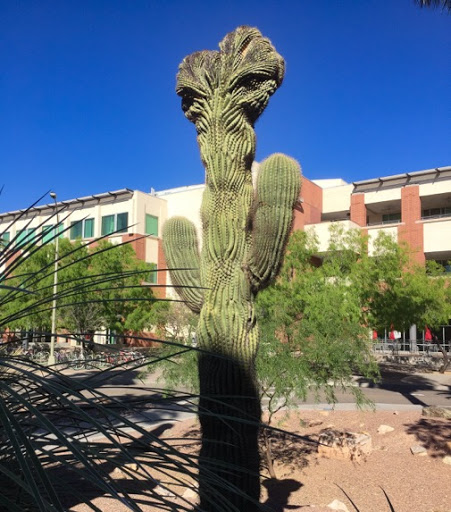
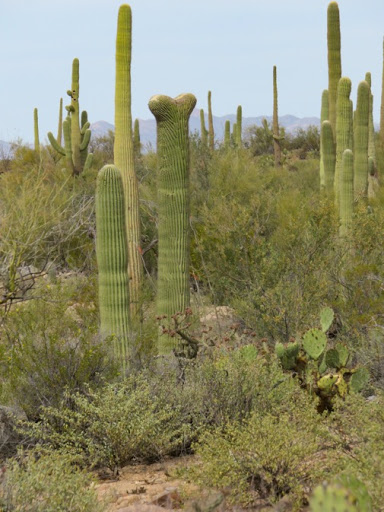




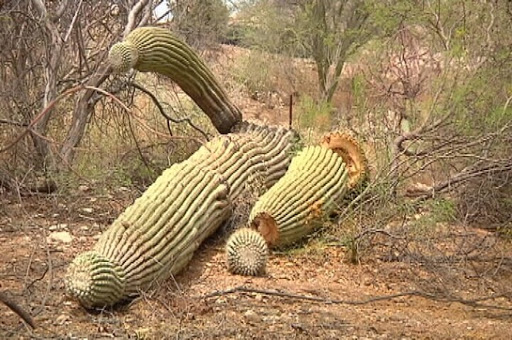
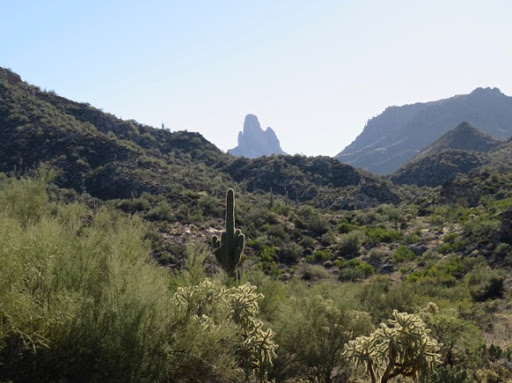







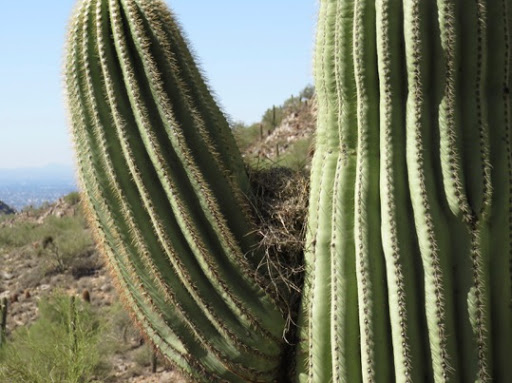

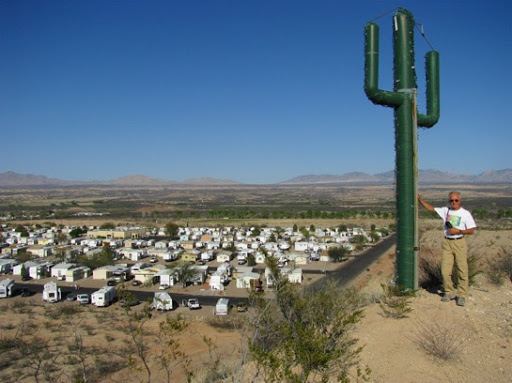

No comments:
Post a Comment